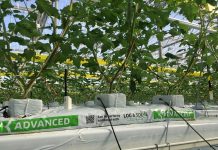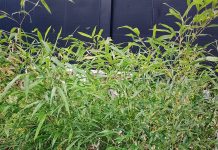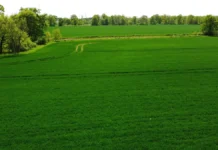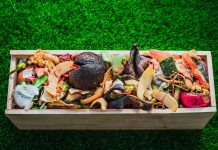W Nowej Wsi koło Warki odbyła się 5 grudnia 8. Konferencja Odmianowa zorganizowana przez Zakład Zaopatrzenia Ogrodniczego w Warce oraz Fruitakademię. Program wypełniły wykłady naukowców z Instytutu Ogrodnictwa oraz przedstawicieli grup producentów i. O nowych odmianach truskawek uprawianych w tunelach mówił przedstawiciel firmy Haygrove. Spotkanie, na które przybyło około 300 osób zakończyło się debatą, której głównym tematem były wymagania jakościowe nowych rynków wobec naszych jabłek oraz inne kwestie interesujące obecnie dla sadowników.
Dr hab. Elżbieta Rozpara (Instytut Ogrodnictwa) przedstawiła paletę nowych oraz już trochę poznanych odmian czereśni pochodzących z różnych ośrodków hodowlanych. Podkreślała, że względu na nasz klimat (przymrozki, deszcze w okresach dojrzewania) i wymagania rynkowe wobec owoców warto okrywać drzewa czereśni osłonami foliowymi. Z naciskiem podkreślała, że z tych właśnie względów w nowych sadach czereśniowych nie ma miejsca dla drzew wyprowadzanych na silnie rosnących podkładkach. Te karłowe nie są tanie, co rzutuje na cenę materiału szkółkarskiego czereśni. Omawiając poszczególne odmiany E. Rozpara zwracała uwagę również na te ich cechy, które przynajmniej w jakimś stopniu mogą sadownikom rekompensować niedostatki posiadanego stanowiska.
Na sali podczas dyskusji
Z danych GUS i PIORiN przedstawionych przez dra Pawła Bieleckiego wynika, że w polskich szkółkach systematycznie wzrasta odsetek jabłoni okulizowanych na podkładkach karłowych. ‘M.9’ wraz ze swoimi klonami stanowiła w 2014 roku prawie połowę (48,3%) drzewek. W roku 2006 było to 39,2%. Na drugim miejscu plasuje się ‘M.26’ z 20,3% udziałem w strukturze produkcji (tu widać wyraźny spadek – w 2006 r. było to 32,9%). Grusze najchętniej uszlachetnia się na selektach gruszy kaukaskiej 46,2% (2006 r. – 37,6%). Udział pigwy S1 wynosi 38,7% (2006 r. – 50,7%), a pigwy MA 10,7% (2006 r. 6,7%). Najczęściej uprawianymi obecnie odmianami są ‘Idared’ (18,6% zbiorów), Šampion11,3% i ‘Jonagold’ 9,9% (oczywiście mowa o wszystkich klonach tych odmian).
Technologie przechowywania owoców pozwalają na podawanie na rynek owoców o wysokich walorach jakościowych – ale nie zawsze i nie wszystkich owoców. Optymalnemu doborowi parametrów technicznych posiadanych obiektów do uprawianych odmian musi towarzyszyć refleksja na temat sposobu realizacji sprzedaży. Niektórych wymagań (na przykład długiego transportu na dalekie rynki) określone odmiany nie spełnią mimo poprawnie przeprowadzonych zabiegów 1-MCP, optymalnego składu atmosfery i temperatury. Podczas wykorzystywania nowych technik przechowywania (na przykład dynamicznej KA) pojawiają się nieznane wcześniej kłopoty – jak fizjologiczne „ordzawianie” się Šampiona czy wewnętrzne uszkodzenia gruszek.
‘Evie2’, ‘Florentina’, ‘San Andreas’, ‘Albion’ – były rekomendowane przez inż. Konrada Kozakiewicza jako najbardziej interesujące ze względu na wysokość i jakość plonu odmiany truskawek powtarzających. Oprócz odmiany – mocno podkreślał – ważne jest optymalne dobranie technologii produkcji – rodzaju tunelu, typu folii okrywowej (efekt rozpraszania – dyfuzji promieniowania słonecznego), decyzji o uprawie w gruncie, na podwyższonych zagonach czy na stołach.
Dr Kamil Jeziorek (Syngenta) ocenił miniony sezon jako nie za trudny w zwalczaniu chorób, ale za to przysparzający sporo problemów ze szkodnikami oraz suszą. Zwracał uwagę na możliwości zmniejszenia nakładów na ochronę poprzez dobieranie dawek fungicydów w zależności od wysokości koron drzew (dopuszczalne np. przy używaniu Topasu). Najgroźniejsze choroby przechowalnicze (szara pleśń, gorzka zgnilizna i mokra zgnilizna można zwalczyć jednym preparatem – jest nim Geoxe®. Omawiając firmowe preparaty Syngenty prelegent zwracał uwagę na szeroka rejestrację fungicydu Switch. Natomiast Scorpion 325 SC jest proponowany do radzenia sobie z antraknozą truskawek – patogenem niedawno stwierdzonym na polskich plantacjach ale bardzo groźnym dla truskawek. Częstym problemem w sadach jabłoniowych jest bawełnica korówka – warto układać program zwalczania szkodników tak, by użyte preparaty nie sprzyjały rozwojowi tego szkodnika. Takim preparatem jest efektywnie likwidujący populacje owocówki jabłkóweczki Affirm.
Koncern stara się pomóc sadownikom sprostać rosnącym wymaganiom rynków co do minimalizowania pozostałości środków ochrony roślin w owocach. Ma temu służyć program FQC – dopasowania programu ochrony do aktualnych wymagań sieci handlowych (Aldi).
W opinii mgr Michała Lachowicza (konsorcjum Appolonia) wiele osób w Polsce jest zaskoczonych niewielkim wpływem panującej w tym sezonie suszy na plony jabłek. Nie wiadomo jednak jeszcze, czy nie odbije się ona na trwałości i jakości owoców złożonych na długotrwałe przechowywanie. Rosyjskie embargo paradoksalnie pomogło polskiemu jabłku w wykreowaniu się na symbol perturbacji w handlu UE-Rosja. Nasze jabłko wyprzedziło tutaj hiszpańskie pomarańcze czy holenderskie gruszki. Rozszerzenie zdobywanych od zeszłego sezonu przyczółków na nowych rynkach zbytu wymaga od naszych sadowników zwiększenia wysiłków celem wspólnego operowania na nich w przyszłości. Potrzebne jest stworzenie wspólnej marki dla polskiego jabłka.
W kuluarach konferencji
pg

















![Zimowe ceny pomidorów, ale czy wszystkich? Niektóre są mniej cenione [13.03.2024] Pomidory](https://www.ogrodinfo.pl/wp-content/uploads/2024/03/Aktualne-ceny-polskich-pomidorow-218x150.jpg)












































